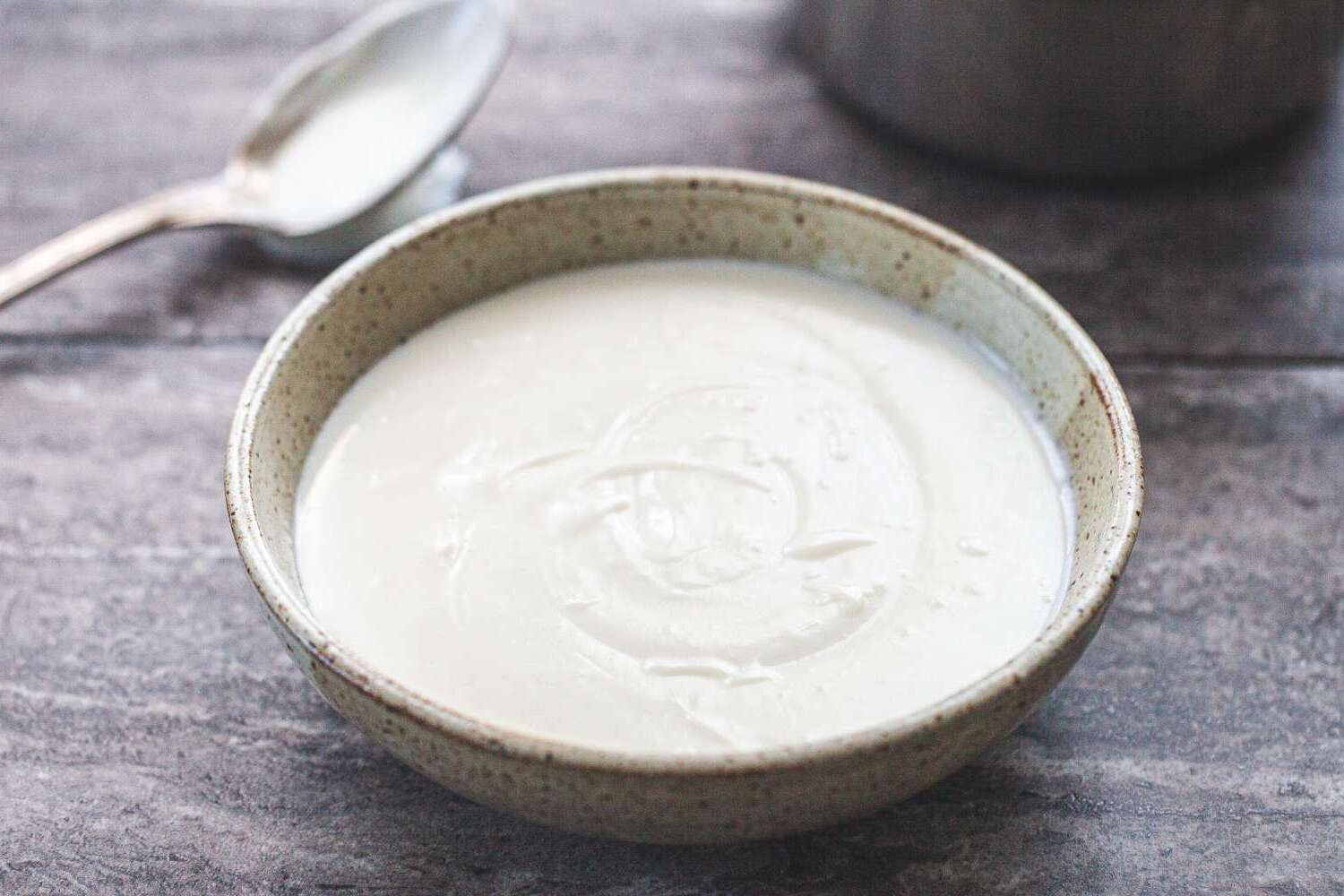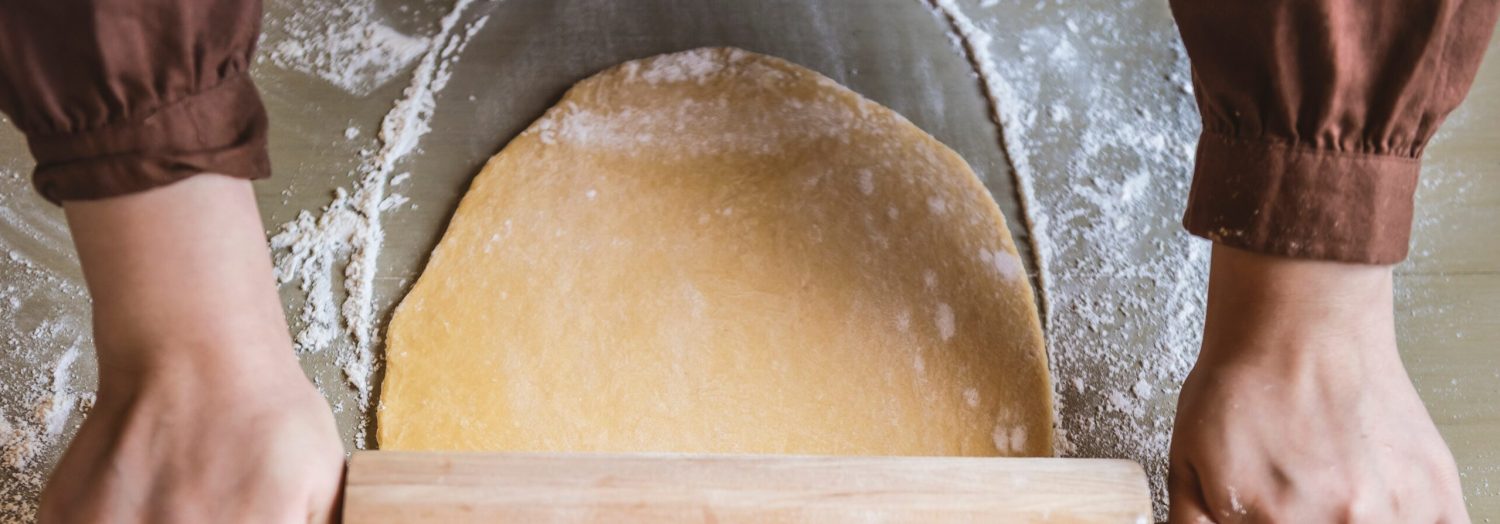A classic bechamel sauce is a versatile and essential component in many dishes, from creamy pasta to rich casseroles. This smooth, white sauce forms the base for numerous recipes, adding a touch of elegance and a comforting, velvety texture to your culinary creations.
While most of the ingredients for this bechamel sauce are common pantry staples, it's important to use whole milk for the best results. Whole milk provides the necessary fat content to achieve the desired creamy consistency. Additionally, ground nutmeg might not be a common household spice, but it adds a subtle warmth and depth to the sauce, making it worth the extra trip to the supermarket.

Ingredients For Basic Bechamel Sauce Recipe
Butter: Provides the rich, creamy base for the sauce.
All-purpose flour: Acts as a thickening agent when combined with the butter.
Whole milk: Essential for achieving a smooth and creamy texture.
Salt: Enhances the overall flavor of the sauce.
Ground nutmeg: Adds a subtle, warm undertone to the sauce.
Technique Tip for This Recipe
When making a béchamel sauce, it's crucial to ensure the roux (the mixture of butter and flour) is cooked properly. Whisk constantly for about 2 minutes to cook out the raw flour taste but avoid browning the mixture. This will give your sauce a smooth, creamy texture. When adding the milk, make sure it's at room temperature or slightly warmed to prevent the sauce from becoming lumpy. If lumps do form, you can strain the sauce through a fine-mesh sieve for a perfectly smooth finish.
Suggested Side Dishes
Alternative Ingredients
butter - Substitute with margarine: Margarine can be used as a non-dairy alternative to butter and provides a similar texture and flavor.
butter - Substitute with olive oil: Olive oil is a healthier fat option and can be used to create a roux, though it will impart a slightly different flavor.
all-purpose flour - Substitute with cornstarch: Cornstarch can be used as a thickening agent, but use half the amount as it has more thickening power than flour.
all-purpose flour - Substitute with gluten-free flour: Gluten-free flour blends can be used to make the sauce suitable for those with gluten intolerance.
whole milk - Substitute with 2% milk: 2% milk can be used for a slightly lighter sauce, though it will be less rich.
whole milk - Substitute with unsweetened almond milk: Unsweetened almond milk is a good non-dairy alternative that will still provide a creamy texture.
whole milk - Substitute with soy milk: Soy milk is another non-dairy option that has a neutral flavor and works well in bechamel sauce.
salt - Substitute with soy sauce: Soy sauce can add a salty and umami flavor, but use sparingly to avoid overpowering the sauce.
ground nutmeg - Substitute with ground mace: Ground mace has a similar flavor profile to nutmeg and can be used in equal amounts.
ground nutmeg - Substitute with cinnamon: Cinnamon can be used as a substitute, though it will impart a slightly different flavor. Use sparingly.
Other Alternative Recipes Similar to This Sauce
How to Store or Freeze This Sauce
Allow the bechamel sauce to cool to room temperature before storing. This prevents condensation, which can make the sauce watery.
Transfer the sauce to an airtight container. Glass containers are ideal as they do not absorb odors and flavors, but high-quality plastic containers work well too.
If you plan to use the sauce within a few days, store it in the refrigerator. It will keep for up to 5 days.
For longer storage, freezing is an excellent option. Pour the cooled sauce into a freezer-safe container, leaving some space at the top to allow for expansion.
Label the container with the date and contents. This helps you keep track of how long the sauce has been stored.
When ready to use, thaw the bechamel sauce in the refrigerator overnight. This slow thawing process helps maintain the sauce's texture.
Reheat the sauce gently on the stovetop over low heat, stirring frequently. If the sauce appears too thick, add a splash of milk or cream to achieve the desired consistency.
If the sauce has separated or become grainy, whisk vigorously or use an immersion blender to restore its smooth texture.
For added flavor, consider incorporating freshly grated Parmesan cheese or a pinch of white pepper during reheating.
How to Reheat Leftovers
Stovetop Method:
- Pour the bechamel sauce into a saucepan.
- Heat over low to medium heat, stirring constantly to prevent burning.
- If the sauce is too thick, add a splash of milk or cream to reach the desired consistency.
- Continue to stir until the sauce is heated through and smooth.
Microwave Method:
- Transfer the bechamel sauce to a microwave-safe bowl.
- Cover the bowl with a microwave-safe lid or plastic wrap with a small vent.
- Heat on medium power in 30-second intervals, stirring well after each interval.
- If the sauce thickens too much, stir in a bit of milk or cream to loosen it up.
- Continue until the sauce is evenly heated.
Double Boiler Method:
- Fill the bottom part of a double boiler with water and bring it to a simmer.
- Place the bechamel sauce in the top part of the double boiler.
- Stir the sauce frequently to ensure even heating and to prevent lumps.
- If needed, add a splash of milk or cream to adjust the consistency.
- Heat until the sauce is warm and smooth.
Oven Method:
- Preheat your oven to 300°F (150°C).
- Pour the bechamel sauce into an oven-safe dish.
- Cover the dish with aluminum foil to prevent a skin from forming.
- Heat in the oven for about 15-20 minutes, stirring halfway through.
- If the sauce becomes too thick, stir in some milk or cream to reach the desired consistency.
Best Tools for Making This Sauce
Saucepan: A medium-sized saucepan is essential for melting the butter and cooking the flour and milk mixture.
Whisk: A whisk is crucial for ensuring a smooth, lump-free sauce by constantly stirring the mixture.
Measuring spoons: Use measuring spoons to accurately measure the butter and flour.
Measuring cup: A measuring cup is needed to measure the milk precisely.
Stove: A stove provides the heat source for cooking the sauce.
Wooden spoon: A wooden spoon can be useful for stirring the sauce as it thickens.
Nutmeg grater: If using whole nutmeg, a nutmeg grater is necessary to grate it fresh into the sauce.
Salt shaker: A salt shaker allows you to season the sauce to taste.
How to Save Time on Making This Sauce
Pre-measure ingredients: Measure out the butter, flour, and milk before starting to save time during cooking.
Warm the milk: Slightly warm the milk before adding it to the roux to help it incorporate more quickly and smoothly.
Use a whisk: A whisk helps blend the flour and butter mixture more efficiently, reducing the risk of lumps.
Prep in bulk: Make a larger batch of béchamel sauce and freeze portions for future use, saving time on subsequent meals.

Basic Bechamel Sauce Recipe
Ingredients
Main Ingredients
- 2 tablespoon Butter
- 2 tablespoon All-purpose flour
- 2 cups Milk preferably whole milk
- to taste Salt
- to taste Ground nutmeg
Instructions
- Melt the butter in a saucepan over medium heat.
- Add the flour and whisk constantly for about 2 minutes.
- Gradually add the milk, whisking constantly to avoid lumps.
- Bring to a boil, then reduce the heat and simmer for a few minutes until thickened.
- Season with salt and nutmeg to taste.
Nutritional Value
Keywords
More Amazing Recipes to Try 🙂
- Ground Beef and Vegetable Stew Recipe1 Hours
- Bacon Wrapped Barbeque Shrimp Recipe25 Minutes
- Beef and Cabbage Stew Recipe1 Hours 15 Minutes
- Beef Noodle Soup Recipe2 Minutes
- Chinese Chicken Vegetable Soup Recipe45 Minutes
- Zuppa Toscana Recipe45 Minutes
- Chicken with Barley Soup Recipe1 Hours
- Buffalo Chicken Wraps Recipe25 Minutes

Leave a Reply